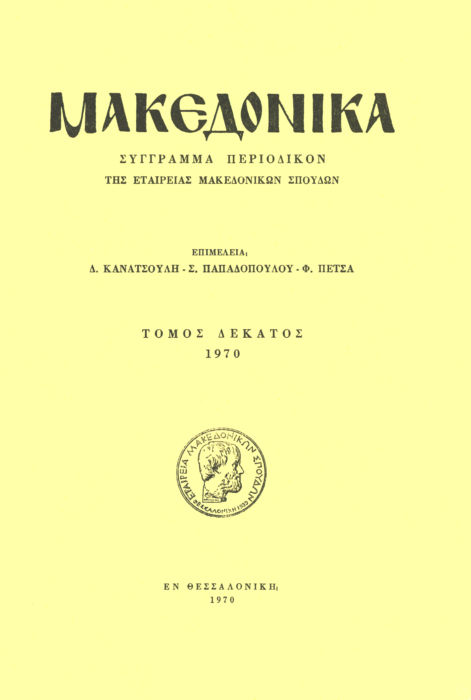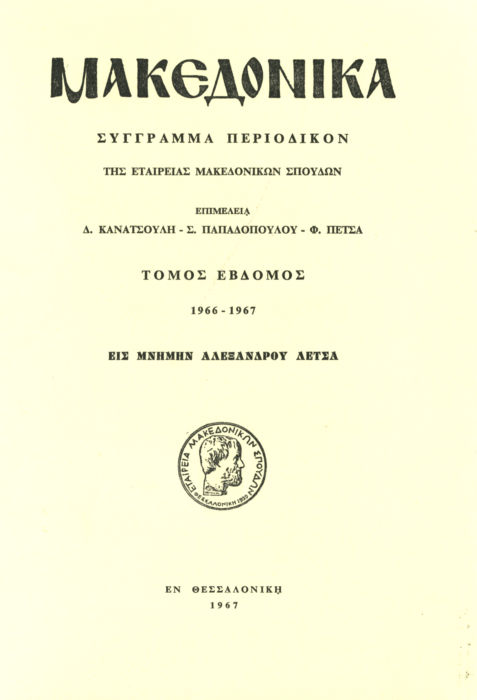Le village Χώστιανες du thème de Megléna
Abstract
En s’appuyant sur des témoignages linguistiques, historiques et folkloriques l’auteur identifie la localité du thème de Megléna Χώστιανες (Rouil- lard et Collomp, Actes de Lavra, no 47, Πρόσταξις d’Alexis I Comnène) avec le village vlachophone de nos jours Όσανη ou ’Αρχάγγελος, qui se trouve sur le mont Paikon.
L’auteur présume que le nom de cette localité est apparemment d’origine latine, dérivant d’un supposé «Hostianus» qui doit signifier «Lieu de Victime» ou «Lieu de Culte caractérisé par l’offrande d’une victime». Selon toute apparence, un culte païen de caractère rural peut-être, fut exercé dans ce lieu par les grecs indigènes de la Macedonia Tertia. Ce culte n’a jamais été interrompu, parce qu’il fut remplacé par un autre, chrétien, mais du même caractère rural. Les Valaques, qui s’établirent plus tard dans la localité Χώστιανες, continuèrent l'exercice de ce culte.
Article Details
- How to Cite
-
Παπαγεωργίου Μ. Γ. (1969). Le village Χώστιανες du thème de Megléna. Makedonika, 9, 48–63. https://doi.org/10.12681/makedonika.1040
- Issue
- Vol. 9
- Section
- Articles

This work is licensed under a Creative Commons Attribution-NonCommercial-ShareAlike 4.0 International License.
Authors who publish with this journal agree to the following terms:
- Authors retain copyright and grant the journal right of first publication with the work simultaneously licensed under a Creative Commons Attribution Non-Commercial License that allows others to share the work with an acknowledgement of the work's authorship and initial publication in this journal.
- Authors are able to enter into separate, additional contractual arrangements for the non-exclusive distribution of the journal's published version of the work (e.g. post it to an institutional repository or publish it in a book), with an acknowledgement of its initial publication in this journal.
- Authors are permitted and encouraged to post their work online (preferably in institutional repositories or on their website) prior to and during the submission process, as it can lead to productive exchanges, as well as earlier and greater citation of published work (See The Effect of Open Access).





